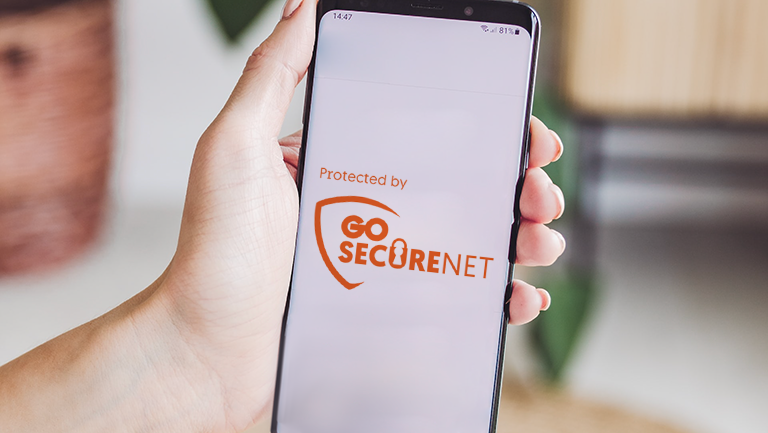Internet
Mobile
Devices
GO Energi
GO Insure
Moving to Malta
Phishing, malware and viruses: What they are and how to avoid them
21 February 2023

Sandra and Mario were browsing online and planning for their much-awaited holiday, when they accidentally clicked on the wrong link and ended with a virus attack on their device. Meanwhile, George wanted to do a good deed and send some money to a charity, but got tricked and realised a little too late that it was just a scam. Sounds familiar?
Some of the biggest threats to online security, phishing, malware and viruses allow cyber criminals to gain access to personal information and other confidential data with more often than not, detrimental effects to the victims. And while we have all experienced some form of online threat, there’s no need to blush over such mishaps. Large corporations have also been deceived. Facebook and Google may be known as two of the world’s biggest tech firms, but between 2013 and 2015, they were swindled out of more than $100 million when a Lithuanian man crafted an elaborate scheme, involving a fake company and a series of bogus multimillion-dollar invoices replicating the actual supplier.
Wondering how can you protect yourself from such threats? Read on to find out.
What is phishing?
One of the most common types of what is known as social engineering, phishing tries to trick people into giving away confidential information, such as passwords, credit card numbers or bank details. These attempts are usually carried out through emails, SMS and phone calls that appear to come from trustworthy sources, while attackers often use scare tactics to spoof victims to hand over their personal information.
If successful, phishing attacks can lead to credit card fraud, data breaches, ransomware attacks, identity theft and even financial losses.
Here are some examples of phishing attempts:
- Messages asking you to verify your account by providing personal information, such as an address and phone number
- Requests for payment via email, SMS or online services like PayPal
- Links that prompt you to enter login details on a website that looks like it’s from a legitimate one but is actually designed to steal your data
- Emails with attachments that contain malicious code
What is malware?
Malware is an attempt to damage your computer or steal information using malicious software so that cyber criminals can gain unauthorized access to data or systems. Programmes like the likes of spyware, ransomware, Trojans, rootkits, adware and keyloggers are used to steal confidential information. Think again of your passwords, credit card number or banking details. But apart from gaining access to your personal details, malware can corrupt files or even shut down entire networks.
Take a look at these common examples of malware:
- Trojans: disguise themselves as harmless programmes but contain malicious code
- Ransomware: encrypt a user’s data and demands payment in order to unlock it
- Spyware: monitors a user’s online activities and steals their personal information
- Adware: displays intrusive advertisements on the user’s screen
- Rootkits: give attackers access to administrative and system level privileges on a targeted machine
What are viruses?
Remember that one time when you were browsing, moving in and out of websites only to be stopped midway by a pop-up informing you that your device has been infected by a virus? Similar to malware, viruses are specifically designed for disrupting computer functions or accessing data without permission, while they may also be used to steal information. They typically corrupt files, change settings or delete data, which can be devastating for both businesses and individuals alike. What’s more, they spread from computer to computer and can often spread quickly if left unchecked.
Here is what a virus may look like and what it may do:
- Worms: replicate themselves and spread across networks
- Boot Sector viruses: can infect the boot sector of a computer’s hard drive
- File infectors: attach themselves to executable files
- Mobile viruses: can be downloaded from websites or emails and can cause damage to phones or tablets
How to stay safe online
The solution to avoiding phishing, malware and virus attacks may seem obvious, yet you can easily be caught unawares and fall victim of an attack when you least expect it. Be cautious when clicking on links, downloading files, particularly those from untrusted sources or opening email attachments. At the same time, be skeptical of emails most especially those with subject titles or links that seem too good to be true.
Meanwhile, remember to keep your operating system and applications up-to-date, which can help protect against the latest threats. Use strong passwords and two-factor authentication where possible and when it comes to your computer, make sure it has an active antivirus.
You must also be careful when using social media. Fraudsters have for years used these channels as a means to carry out attacks like phishing. Some are also used to hijack accounts and launch further attacks to your connections or followers. So make sure you limit access to personal information and data by setting strict privacy settings on all your social media accounts.
Take a look at these additional tips on how to keep your data safe.
Subscribe to Secure Net
Designed to provide increased safety and protection when on your GO home or mobile internet connection, Secure Net automatically identifies and blocks fraudulent websites, reducing the risk of cyberattacks of all sorts and other online threats, while through its parental controls, parents can block access to websites that may contain unsuitable content for their children. In the past 6 months alone, Secure Net has blocked 32,556,186 malicious websites, phishing attacks, malware infections, viruses and other type of similar threats, while 91,965,583 inappropriate, unsuitable and even harmful content was blocked from reaching children through its parental controls.
Secure Net can be added to your existing internet connection or your pay monthly mobile plan for just €0.99/month and as an added bonus, we’ll give you the first 3 months for free. Find out more about Secure Net and how it can protect you, while take a look at how you can activate this add-on.
As cyber criminals are constantly developing new methods to hack into systems and access personal data, while most of us spend much of our time online, taking proactive steps to staying safe will give you peace of mind and can minimize your risk of falling prey to malicious activities while exploring the web.

